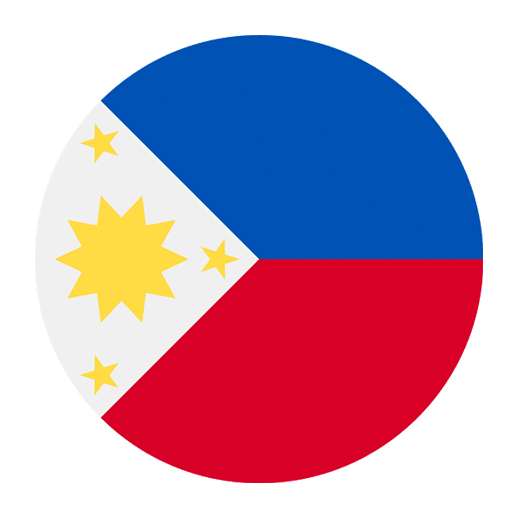The Philippines, an archipelago of over 7,000 islands, boasts a rich tapestry of languages, cultures, and histories. Among these languages, Tagalog holds a prominent place, serving as the foundation for Filipino, the national language. However, the linguistic landscape of the Philippines is far from monolithic. It is a mosaic of various languages and dialects, each with its own unique identity and historical background. This article delves into the intricate relationship between Tagalog and other Philippine languages, exploring their common roots, distinct characteristics, and the interplay that shapes the linguistic identity of the nation.
Historical Context
The history of Philippine languages is deeply intertwined with the migration patterns, trade routes, and colonial influences that have shaped the archipelago over centuries. The Malayo-Polynesian language family, a branch of the Austronesian languages, is the linguistic backbone of the region. This vast family includes almost all the languages spoken in the Philippines, including Tagalog, Cebuano, Ilocano, Hiligaynon, and many others.
Before Spanish colonization in the 16th century, the Philippines was a collection of independent polities, each with its own language and culture. The arrival of the Spanish brought about significant changes, including the introduction of the Latin script and the spread of Christianity, which had profound effects on the local languages. However, despite these influences, the pre-colonial linguistic diversity largely persisted.
Tagalog: The Foundation of Filipino
Tagalog, primarily spoken in the central and southern parts of Luzon, was chosen as the basis for the national language, Filipino, in the 1930s. This decision was influenced by several factors, including the geographical and political significance of Manila, the capital city where Tagalog is predominantly spoken. Filipino, as an evolving language, incorporates elements from other Philippine languages, as well as Spanish, English, and other foreign languages.
Grammatical Features
Tagalog, like other Philippine languages, exhibits agglutinative features, meaning that it forms words and expresses grammatical relationships through the addition of affixes. These affixes can denote tense, aspect, mood, and other grammatical categories. For instance, the verb “to eat” in Tagalog is “kain.” By adding different affixes, we can form “kumain” (ate), “kumakain” (eating), “kakain” (will eat), and so on.
Vocabulary
The vocabulary of Tagalog has been significantly enriched by loanwords from Spanish, due to over three centuries of colonization, as well as from English, owing to the American occupation and the subsequent influence of globalization. However, its core vocabulary remains Austronesian, sharing similarities with other Philippine languages.
Cebuano: The Language of the Visayas and Mindanao
Cebuano, also known as Bisaya or Binisaya, is the most widely spoken language in the Visayas and Mindanao regions. It is the second most spoken language in the Philippines, after Tagalog/Filipino. Despite the geographical distance and cultural differences, Cebuano shares many linguistic features with Tagalog, highlighting their common Austronesian roots.
Similarities and Differences with Tagalog
Both Tagalog and Cebuano exhibit similar grammatical structures, such as the use of affixes to denote tense and aspect. However, there are notable differences in vocabulary, pronunciation, and certain grammatical rules. For instance, the word for “house” is “bahay” in Tagalog, while it is “balay” in Cebuano. Moreover, Cebuano has retained more archaic Austronesian terms that have evolved differently or disappeared in Tagalog.
Influence and Media
Cebuano has a vibrant presence in media, with numerous radio stations, newspapers, and television programs broadcasting in the language. This robust media presence helps maintain and promote Cebuano culture and language, even in the face of the dominant influence of Tagalog/Filipino and English.
Ilocano: The Language of Northern Luzon
Ilocano is the third most spoken language in the Philippines, primarily used in the Ilocos Region and parts of Northern Luzon. It serves as a lingua franca for various ethnolinguistic groups in the northern part of the country.
Grammatical and Lexical Features
Ilocano, like Tagalog and Cebuano, employs a system of affixes to indicate grammatical relationships. However, it also has distinct features, such as a different set of pronouns and unique vocabulary. For example, the word for “water” is “tubig” in Tagalog, “tubig” in Cebuano, but “danum” in Ilocano. These differences illustrate the linguistic diversity within the Austronesian language family.
Cultural Significance
Ilocano culture is known for its resilience and strong sense of community, traits that are reflected in the language. Ilocano literature, particularly poetry and folk songs, plays a crucial role in preserving and promoting the language. The widespread use of Ilocano in daily communication, education, and media ensures its continued vitality.
Hiligaynon: The Language of Western Visayas
Hiligaynon, also known as Ilonggo, is predominantly spoken in the Western Visayas region, including the islands of Panay and Negros. It is known for its melodic intonation and gentle speech patterns, which are often associated with the warm and hospitable nature of its speakers.
Phonological and Grammatical Characteristics
Hiligaynon shares many phonological and grammatical features with other Philippine languages, such as the use of affixes and a flexible word order. However, it also has unique characteristics, such as the frequent use of the particle “man,” which adds emphasis or politeness to statements. For example, “Ano man?” translates to “What?” in English, but with a nuance of politeness or curiosity.
Language and Identity
Hiligaynon serves as a vital marker of identity for its speakers, who take pride in their linguistic heritage. The language is used in various cultural expressions, including literature, music, and festivals, which celebrate the rich history and traditions of the Hiligaynon-speaking people.
Waray-Waray: The Language of Eastern Visayas
Waray-Waray, or simply Waray, is spoken in the Eastern Visayas region, particularly in the provinces of Samar and Leyte. It is one of the major languages of the Philippines, with a significant number of speakers.
Distinctive Features
Waray-Waray has several distinctive phonological and grammatical features. For instance, the language often uses the particle “gad” for emphasis, similar to the use of “man” in Hiligaynon. The vocabulary of Waray-Waray also includes words that are not found in other Philippine languages. For example, “kakan-on” means “food” in Waray-Waray, while in Tagalog, it is “pagkain.”
Role in Regional Culture
Waray-Waray is deeply embedded in the culture of Eastern Visayas. It is used in local literature, folk songs, and rituals, playing a crucial role in preserving the region’s cultural identity. Despite the dominance of Tagalog/Filipino and English in national media, Waray-Waray continues to thrive in its regional context.
The Interplay Between Tagalog and Other Philippine Languages
The relationship between Tagalog and other Philippine languages is characterized by both mutual influence and distinctiveness. While Tagalog, as the basis of the national language Filipino, exerts significant influence, it also absorbs elements from other languages, creating a dynamic linguistic exchange.
Code-Switching and Borrowing
In many parts of the Philippines, speakers often engage in code-switching, seamlessly blending Tagalog/Filipino with their native languages. This practice reflects the multilingual reality of the country and the fluid boundaries between languages. For instance, a Cebuano speaker might say, “Magkita ta ugma, ha?” (“Let’s meet tomorrow, okay?”), where “ugma” is Cebuano for “tomorrow,” and the rest of the sentence is in Filipino.
Language Preservation and Revitalization
Despite the dominance of Filipino and English, efforts are being made to preserve and revitalize regional languages. Educational programs, cultural initiatives, and media production in local languages play a crucial role in maintaining linguistic diversity. The inclusion of regional languages in the curriculum under the Mother Tongue-Based Multilingual Education (MTB-MLE) policy is a significant step towards this goal.
Conclusion
The linguistic landscape of the Philippines is a testament to the country’s rich cultural heritage and complex history. Tagalog, as the foundation of Filipino, serves as a unifying language, but it coexists with a multitude of other languages, each with its own unique identity and significance. Understanding the relationship between Tagalog and other Philippine languages provides valuable insights into the nation’s linguistic diversity and the dynamic interplay that shapes its cultural identity.
As language learners and enthusiasts, exploring this intricate web of languages enriches our appreciation of the Philippines’ linguistic heritage. It also underscores the importance of preserving and promoting linguistic diversity, not just in the Philippines, but around the world. In doing so, we honor the rich tapestry of human expression and the cultural nuances that make each language unique.

